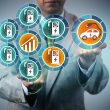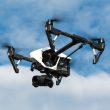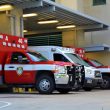Navigating through the “new normal” of travel and infrastructure as cities reopen
The onset of the COVID-19 pandemic disrupted local, regional and global travel patterns in unprecedented ways. By April, vehicle miles traveled plummeted across the globe. In the United States, drivers covered 70 percent fewer miles than before the pandemic. Public transit systems too saw massive declines, as workers either stopped commuting entirely or turned to personal cars for socially distant travel. Los Angeles’ public transportation system, for example, experienced a more than 70 percent decrease in average weekly ridership levels at the start of the pandemic.
Trajectories and challenges
As the fourth quarter of 2021 begins, traffic volume is not only approaching pre-pandemic levels in many parts of the U.S., but also exceeding it. Parts of the world with the virus under control and economies largely open, like Israel and Australia (before an August surge in cases), find drivers putting 20 percent or more miles under their wheels than before the pandemic. In the U.S., Americans are driving in some different directions. There is less commuting and more running errands, reaching leisure destinations and long-distance trips.
In the last 18 months, municipal leaders have been challenged by the pandemic’s economic and social strife, natural disasters amplified by climate change, and another reckoning with racial and economic injustice. Economic recovery, climate change and equity are at the top of the agenda for public leaders. Transportation policies and operations that affect travel behavior can positively impact these priorities. Next year is a unique moment to shape individual travel choices and their impact.
Individuals are most likely to change travel behavior when they move home or job locations. Whether you were able to work at home for the last 18 months, lost or had to leave a job during the pandemic, or are finding a new job as one of the 15+ million Americans who quit a job since April, the next year is ripe with risk and opportunity to change how people travel. If municipalities do nothing, evidence suggests there will be increases in driving that will burden family wallets, go the wrong way on climate goals, and cripple cities and regions with congestion.
Action and Opportunities
In the past year, cities across the U.S. made bold mobility moves. Boston and Miami-Dade acted rapidly on ridership and traffic data to add bus lanes and adapt bus service to meet on-going demand from essential workers. San Franciscoand Houston invested in High Occupancy Vehicle (HOV) lanes where they are not usually seen, on city streets and to speed reverse commutes. Philadelphia’s transit agency, SEPTA, is discounting fares to attract riders back to the system and reward those who rely on the system. New York announced plans to launch congestion pricing in 2022 and Los Angeles released its first congestion pricing proposal.
With Congress on the precipice of massive increase in infrastructure investment, municipal leaders need tools that transform data into information to empower better decisions. Whether from multi-modal insight services like StreetLight or ESRI’s and Google Cloud’s platforms for using Waze for Cities free data, leaders have better tools to make smarter decisions, than ever before.
A chance for a carpool comeback
The infrastructure bill and congestion pricing promise more investment in transit, but service improvements can be years away and congestion is rising now. Even before the pandemic started, far too many workers have limited good transit access to their jobs. As prices for used cars and ride hailing services soar, citizens, employers and policy makers need immediate solutions for reliable and affordable access to work. There may be no more reliable ride to work than with a coworker or someone who works nearby, but matching people for carpools has been notoriously difficult.
The Waze Carpool app launched in 2018 to pair commuters going the same way. Employers created ride matching programs to help employees find convenient carpool partners based on origins, shared carpool parking incentives, and plans for adjustable work hours per partner group. Riders chipped in to cover the cost of the trip for drivers.
While carpooling is not the only solution to minimizing the number of cars on the road and expanding access to employment, it creates a personalized, community-based transportation mode as the people get used to the comfort of traveling with others.
Choices matter
The pandemic has demonstrated the powerful impact of choices made by city and county officials. This coming year, choices with lasting impact on transportation behavior will have to be made. Citizens, employers and the environment need public leaders to use all the resources available to ensure we emerge from the pandemic with a transportation system that supports vibrant communities and a thriving and just economy.
Andrew Stober is the head of Public Partnerships and Carpool for Waze where he helps public agencies get the most from the Waze for Cities program and works with partners to accelerate the adoption of Waze Carpool to meet transportation demand management, climate and transportation equity goals. Stober previously served as vice president of planning and economic development for Philadelphia’s University City District, and as the chief of staff for the Philadelphia Mayor’s Office of Transportation and Utilities (MOTU), where he worked closely with the Streets Department, Water Department, and Philadelphia International Airport to plan and manage multi-billion dollar operating and capital budgets. He had lead responsibility for launching Philadelphia’s Indego bike share program, reestablishing a City energy office, and for raising millions of dollars in competitive public and private grants to improve transportation infrastructure.




















